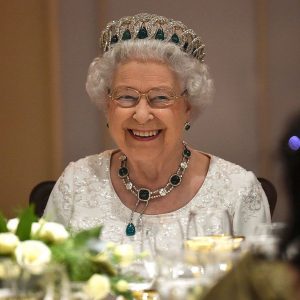A decade ago, the royal family notched up more than 4,000 engagements in a year, travelling across the UK and criss-crossing the globe.
The then Prince of Wales travelled to Saudi Arabia, Mexico and Colombia; Prince Harry went to Brazil and Chile and the Queen and the Duke of Edinburgh carried out more than 660 engagements between them, including trips to France and Italy.
This year the royal family – commonly referred to as “the firm” – is operating on a significantly smaller scale. It is likely to conduct little more than half of the engagements that were carried out in 2014, with both the King and the Princess of Wales being diagnosed with cancer.
Joe Little, managing editor of Majesty magazine, said: “It’s a remarkable situation and a significant moment for the monarchy and the institution so early in the king’s reign that two senior figures should be out of action.” The pressure was now on a “much smaller team”. Little added that a time of “pomp and pageantry” in early summer was approaching with “all manner of events”. These include the king’s birthday parade, also known as Trooping the Colour, and Royal Ascot.
Tim O’Donovan provides a tally of the royal family’s engagements in a letter to the Times each year and found in 2023 there were 2,270 engagements. This was reported to be the lowest figure since 1983, excluding the years affected by pandemic lockdowns in 2020 and 2021.
It was briefed before the king ascended to the throne that his vision was of a slimmed-down monarchy to ensure value for public money. But this is a strategy that has its own perils.
“In one version you have a narrower number of people living off the public purse,” a friend of the king told the Financial Times in 2022. “It will be less about the royal family and more about direct successors, less about the history, heritage and glamour, more focused on the role of head of state.” The death of the Queen and the Duke of Edinburgh, the sexual abuse scandal involving financier Jeffrey Epstein that embroiled Prince Andrew and the family schism with the Duke and Duchess of Sussex have meant a focus on a much smaller circle of senior royals.
It means when things go wrong, there are fewer royals to call on – or what Prince Harry might call “spares”.
Ed Owens, a royal historian and commentator, and author of After Elizabeth: Can the Monarchy Save Itself?, said: “They have not got the depth in ranks. The substitutes they have are elderly, or not so well known.”
Owens said the model of monarchy over the last century was an emphasis on public duty and visibility, with the royal family travelling across the country, attending events and cutting ribbons. “I think they recognise that the amount of work that was needed in the 20th century of the monarch is unsustainable, given the current size of the family,” he said. “Why not then focus on one or two major projects which you can make your calling cards?”
As well as fewer royal engagements, the slimmed-down monarchy and recent crises may also raise constitutional questions. If Prince William ascends to the throne in the next few years, then in the event of his being incapacitated Prince Harry would be regent, if he was prepared to return to the UK, since Prince George would still be under the age of 18. There would be questions about such constitutional arrangements given that Prince Harry is no longer a working member of the royal family.
It appears there may been misgivings in the family about the slimmed-down strategy. In an interview with the Canadian channel CBC News last year, Princess Anne played down the idea of a smaller monarchy.
She said: Well, I think the ‘slimmed-down’ [monarchy] was said in a day when there were a few more people around to make that seem like a justifiable comment. It doesn’t sound like a good idea from where I’m standing.”
Writing on the website of the current affairs title Prospect on Friday, its editor Alan Rusbridger noted the potential vulnerability of the monarchy in this new era. He wrote: “Kate’s announcement heightens the increasing sense of fragility about the institution of which she has become such an iconic member.
“Take two key members of the family out of action (four, if you include reduced participation from partners looking after them) and the whole operation begins to teeter a bit.”





